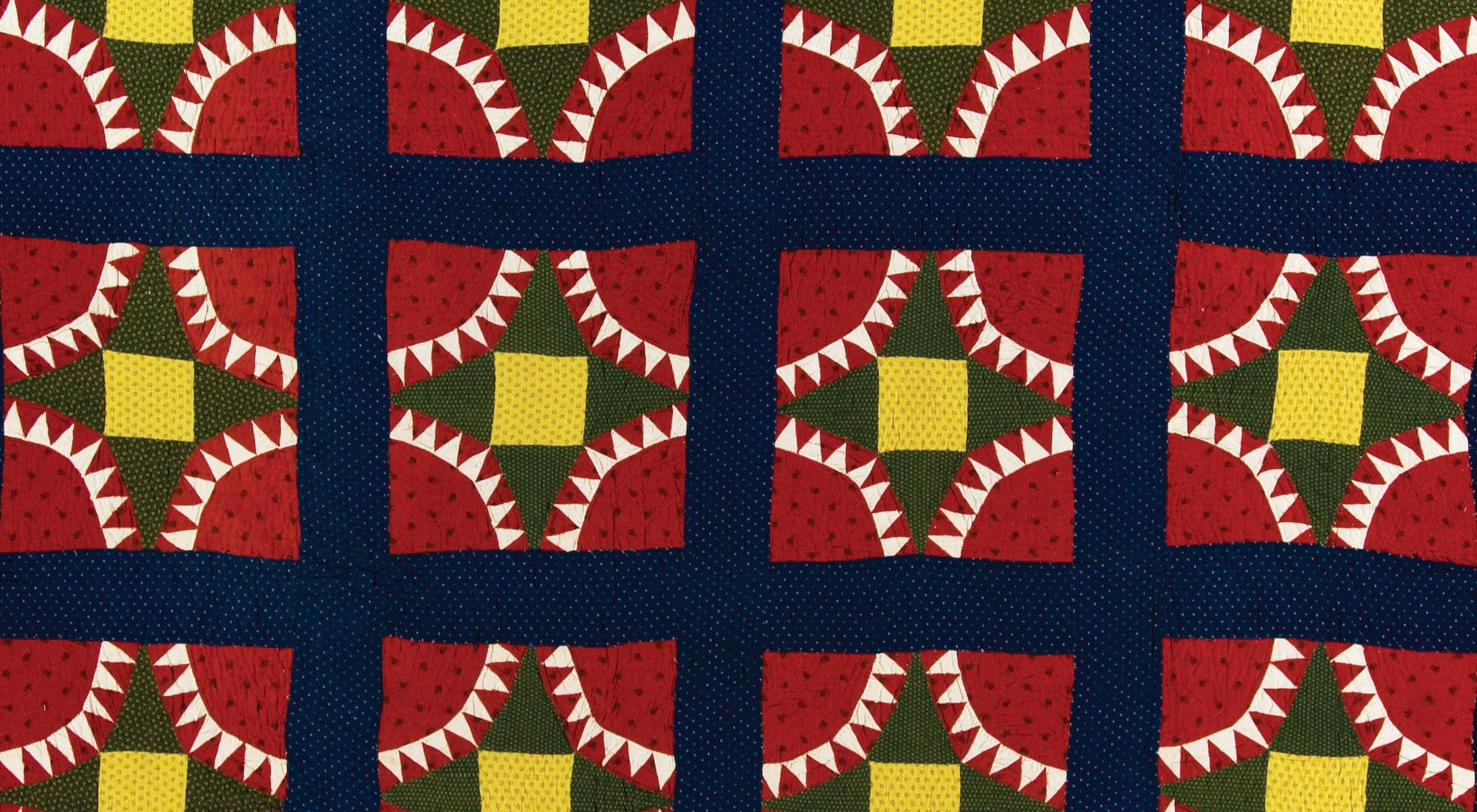
American Quilts in the Modern Age:
1870-1940
May 23-Nov 15, 2009

The quilts featured in the new exhibition American Quilts in the Modern Age, 1870-1940 showcase diverse examples of quilters' creations from a time of disenchantment with modern life.
Quilts reflect the times in which they are created, often mirroring societal shifts and transformations. Rapid change, bringing conflict between technological progress and nostalgia for a simpler time, impacts today's culture. The same tension also shaped America's "modern age": the period between 1870 and 1940 when America was growing at an unprecedentedly rapid pace and struggling to come to terms with what it meant to be a modern, industrialized nation. Curators Marin Hanson, Patricia Crews, and Jonathan Gregory chose quilts from the collection of the International Quilt Museum to illustrate some of the responses quiltmakers had to these feelings of conflict and unease.
From pieced block to Crazy style to Colonial Revival examples, as well as one-of-a-kind creations, the full array of style and design appears in this exhibition covering seven decades of quiltmaking. The curators pay special attention to the modern and anti-modern tensions that persisted throughout this era of America's coming of age, from the Civil War to World War II. They also address the textile technology and cultural context of the times in which the quilts were created, with an eye to the role that industrialization and modernization played in the evolution of techniques, materials, and designs